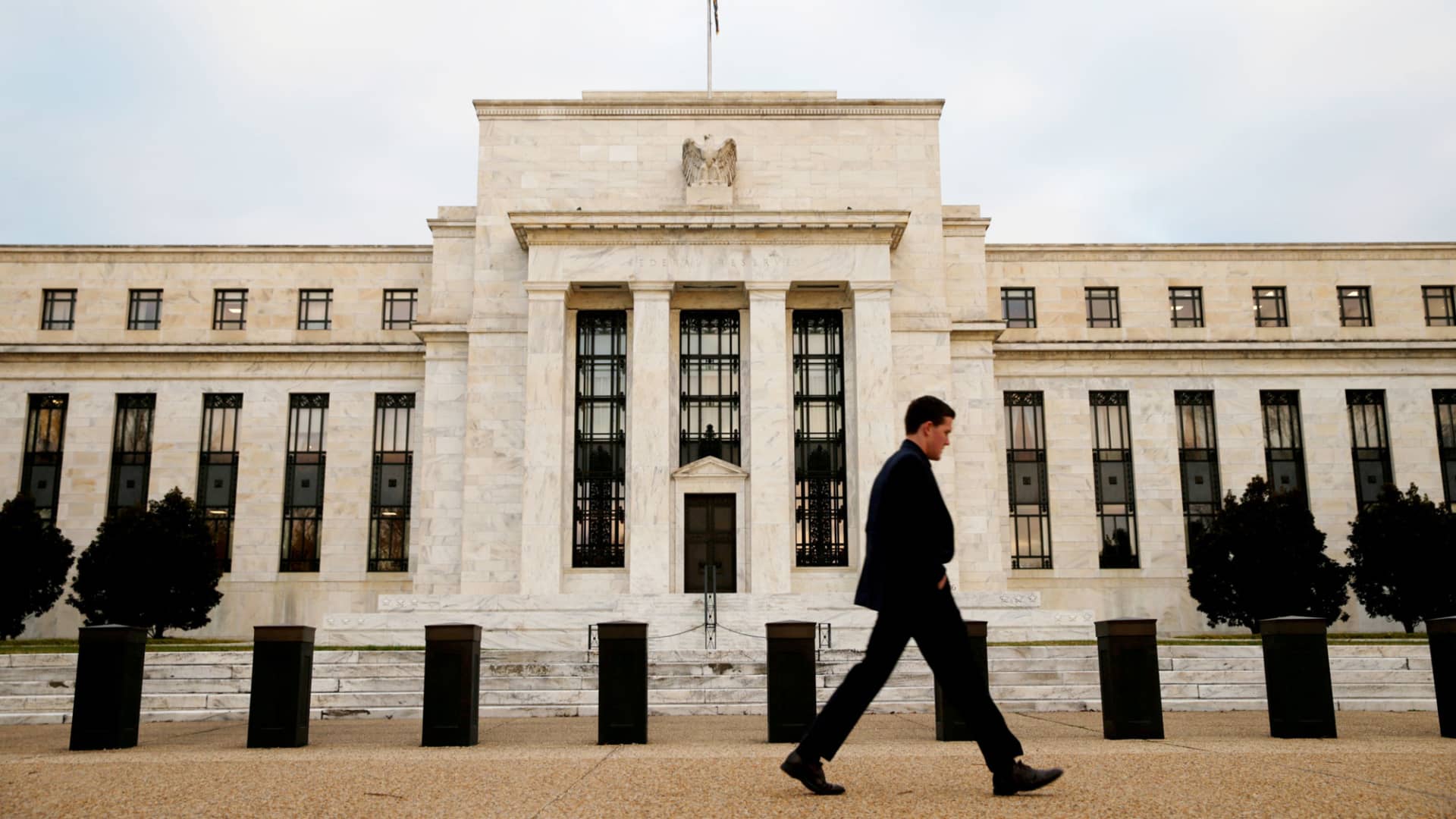The Federal Reserve Bank building
Kevin Lamarque | Reuters
The Federal Reserve has raised the target federal funds rate by a quarter of a point in its ongoing efforts to control inflation.
In a move expected by financial markets, the Federal Open Market Committee of the central bank increased the funds rate to a target range of 5.25% to 5.5%. This would be the highest level for the benchmark rate since early 2001.
Despite recent signs of cooling inflationary pressures, the central bank made it clear that the fight against rising prices is not over.
Although inflation is still above the Fed’s 2% target, Columbia Business School economics professor Brett House suggests that this rate hike could potentially mark the end of the current cycle.
Understanding the impact of the federal funds rate
The federal funds rate, set by the U.S. central bank, is the interest rate at which banks borrow and lend to each other overnight. While this rate doesn’t directly affect consumers, it does influence borrowing and saving rates they encounter daily.
As a result of this rate hike – the 11th increase since March 2022 – consumer borrowing costs will immediately rise, affecting various forms of borrowing like credit cards, mortgages, and car loans. The goal is to alleviate the possibility of a recession.
“The pain caused by the rate hike is not unwarranted,” says House. “It’s a trade-off between short-term pain and potential long-term pain if inflation is left unchecked.”
How higher interest rates impact your finances
1. Credit card rates reach record highs
Srdjanpav | E+ | Getty Images
Credit card rates are tied to the Fed’s benchmark rate, so as the federal funds rate rises, credit card rates follow suit. The current average credit card rate has reached an all-time high of over 20%, with significant balances carried over month to month by nearly half of credit card holders.
This rate hike will cost credit card users at least $1.72 billion in interest charges over the next year, according to WalletHub analysis. McBride, Bankrate’s chief financial analyst, advises those with credit card debt to take advantage of zero percent balance transfer cards to help with debt repayment.
2. Mortgage rates remain high
Although 15- and 30-year mortgage rates are fixed and not immediately affected by rate hikes, homebuyers will face higher borrowing costs due to inflation and the Fed’s policies.
Homebuyers can expect to pay approximately $11,160 more over the life of their loan due to the rate hike. Adjustable-rate mortgages (ARMs) and home equity lines of credit (HELOCs) are directly impacted by the prime rate, with HELOC rates currently at the highest level in 22 years.
3. Car loans becoming more expensive
Rising interest rates, coupled with an increase in vehicle prices, are resulting in larger payments for auto loans. The average rate for a five-year new car loan is currently at the highest level in 15 years.
The combination of high vehicle prices and daunting borrowing costs presents significant challenges for shoppers.
Ivan Drury
director of insights at Edmunds
Consumers could end up spending $2,278 more in interest for a $40,000, 72-month car loan due to the difference in interest rates compared to the previous year. Ivan Drury, Edmunds’ director of insights, acknowledges the difficulties faced by shoppers in today’s car market.
4. Some student loans are more expensive
The Fed’s rate hikes do not directly impact federal student loans, which have fixed rates. However, new direct federal student loans for undergraduate students now come with a higher interest rate starting in the 2023-2024 academic year. On the other hand, existing federal education debt currently benefits from a 0% interest rate until student loan payments resume in October.
Private student loans, which are tied to rates like Libor, prime, or Treasury bill rates, will be subject to higher interest rates as the Fed raises rates. The extent of the impact will vary depending on the benchmark.
Key considerations for savers regarding higher rates
PM Images | Iconica | Getty Images
One positive outcome of rate hikes is the increase in interest rates on savings accounts. Retail banks, which tend to adjust deposit rates in response to changes in the federal funds rate, are currently offering average savings account rates of 0.42%. Online savings accounts and short-term certificates of deposit are even higher, with rates surpassing 5% — the highest since the 2008 financial crisis.
However, if this rate hike is the last for a while, experts suggest considering locking in higher yields while they last.
Denial of responsibility! VigourTimes is an automatic aggregator of Global media. In each content, the hyperlink to the primary source is specified. All trademarks belong to their rightful owners, and all materials to their authors. For any complaint, please reach us at – [email protected]. We will take necessary action within 24 hours.


